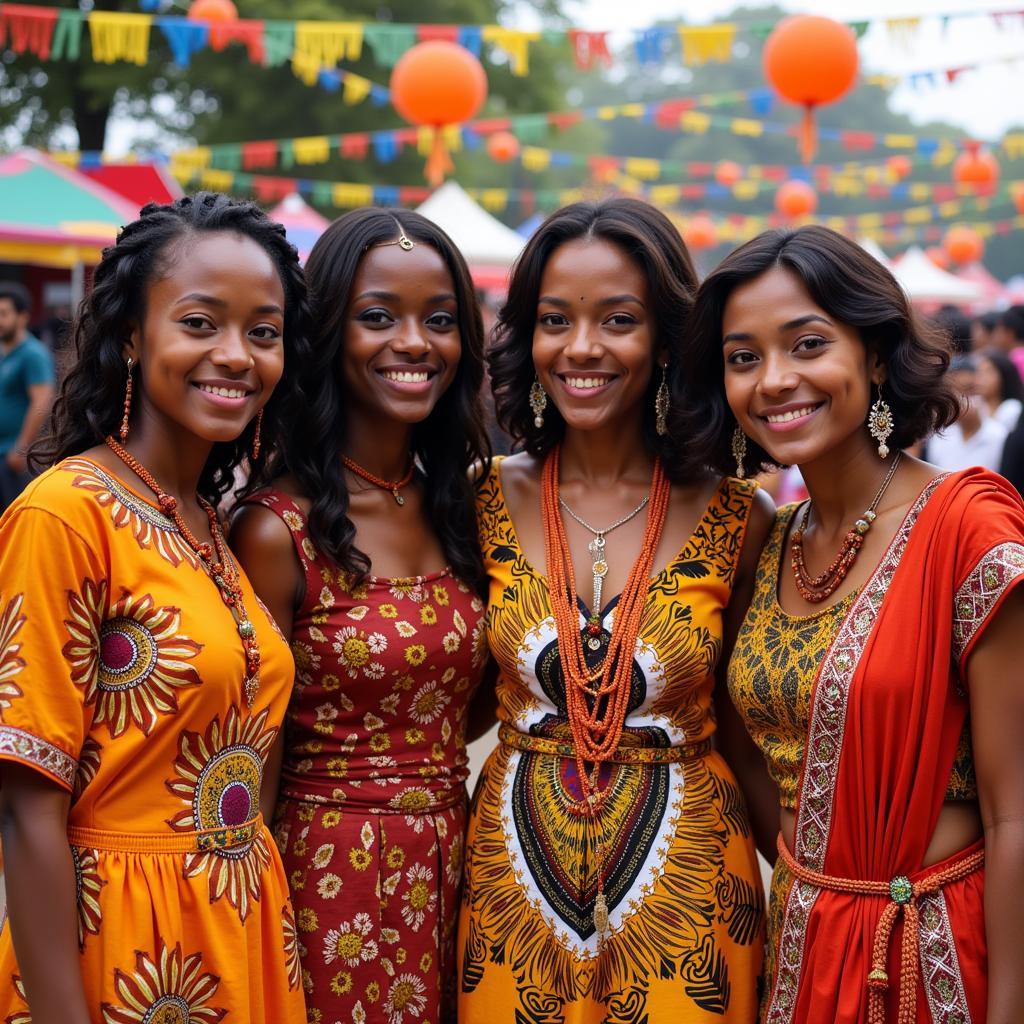African American Artists in 2017: A Year of Creative Explosion
2017 was a remarkable year for African American artists, showcasing a vibrant tapestry of talent across diverse mediums. From the visual arts to music, film, and literature, Black artists made their voices heard, challenging norms, pushing boundaries, and captivating audiences worldwide. This article delves into the captivating artistic expressions of the year, highlighting the key figures and trends that defined this era of creative dynamism.
A New Wave of Visual Artists
2017 witnessed the emergence of a fresh generation of African American visual artists who are redefining the landscape of contemporary art.
The Rise of Afrofuturism
Afrofuturism, a movement blending African culture with futuristic themes, gained significant traction in 2017. Artists like Wangechi Mutu, whose sculptures and paintings explore themes of identity and the female body, emerged as prominent voices within this movement.
“Afrofuturism is a way of thinking, a way of seeing the world. It allows us to imagine a future where Black people are not just survivors but creators, innovators, and leaders,” – Dr. Imani Perry, Professor of Africana Studies at Princeton University.
The work of these artists challenged traditional narratives and fostered a dialogue around Black identity, technology, and the power of imagination.
The Power of Social Commentary
Social commentary remained a prominent theme in the work of many African American visual artists. Artists like Kerry James Marshall, known for his powerful paintings depicting Black life in America, continued to provoke and inspire audiences with his bold and unflinching narratives.
“My work is about showing the world what it looks like to be Black in America,” – Kerry James Marshall
Through their art, these artists challenged the status quo, shedding light on social issues and igniting important conversations around race, equality, and representation.
Music: Soul, Hip-Hop, and Beyond
2017 was a pivotal year for music, with African American artists pushing creative boundaries and captivating audiences across genres.
The Continued Dominance of Hip-Hop
Hip-hop continued its reign as a dominant musical force, with artists like Kendrick Lamar, Chance the Rapper, and Cardi B topping the charts and garnering critical acclaim. Lamar’s album “Damn.” explored themes of faith, doubt, and the complexities of Black identity in a powerful and introspective way.
“I just try to be as real as possible in my music. I want my music to make people think and feel,” – Kendrick Lamar
Meanwhile, Chance the Rapper, known for his soulful and socially conscious lyrics, became the first artist to win a Grammy Award for Best Rap Album without a record label. Cardi B’s rise to fame highlighted the empowering and unapologetically bold nature of female rappers.
Soul Music Revival
Soul music experienced a revival in 2017, with artists like Solange Knowles and SZA delivering critically acclaimed albums that blended elements of R&B, jazz, and experimental sounds. Solange’s album “A Seat at the Table” tackled issues of race, identity, and family in a moving and personal way, while SZA’s album “Ctrl” explored the complexities of love, relationships, and self-discovery.
“I want my music to be a space where people can feel heard and understood,” – SZA
Film: Stories of Resistance and Resilience
African American filmmakers continued to tell compelling stories on the big screen, exploring themes of resistance, resilience, and the African American experience.
The Black Panther Phenomenon
“Black Panther,” released in 2018, became a cultural phenomenon that transcended the world of film. This superhero film, starring Chadwick Boseman as the first Black superhero in a major Hollywood film, celebrated Black culture, history, and identity in a powerful and inspiring way.
“Black Panther is about more than just a superhero. It’s about the power of Black people, our culture, and our history,” – Ryan Coogler, director of “Black Panther”
The film resonated with audiences worldwide, breaking box office records and sparking conversations about race, representation, and the future of Hollywood.
The Power of Independent Filmmaking
Independent filmmaking remained a vibrant force in 2017, with African American filmmakers exploring diverse narratives and challenging cinematic conventions.
“Independent filmmaking allows us to tell stories that might not be told by the mainstream,” – Ava DuVernay, director of “Selma” and “13th”
These films brought fresh perspectives and voices to the forefront, highlighting the depth and diversity of Black experiences.
A Year of Artistic Empowerment
2017 marked a year of artistic empowerment for African American artists, showcasing their talent, creativity, and resilience. These artists used their platforms to challenge norms, spark conversations, and inspire change, making significant contributions to the cultural landscape and shaping the future of art.
FAQs
Q: What are some of the key themes explored by African American artists in 2017?
A: Key themes included identity, race, social commentary, resilience, Afrofuturism, and the African American experience.
Q: What are some examples of influential African American visual artists from 2017?
A: Wangechi Mutu, Kerry James Marshall, and Kara Walker are a few notable examples.
Q: What are some examples of music genres that were popular among African American artists in 2017?
A: Hip-hop, soul, R&B, and jazz were popular genres in 2017.
Q: What were some notable films directed by African American filmmakers in 2017?
A: “Black Panther” and “Get Out” are two noteworthy examples.
Q: How did African American artists contribute to the cultural landscape in 2017?
A: They used their art to challenge norms, spark conversations, inspire change, and celebrate Black culture, history, and identity.



